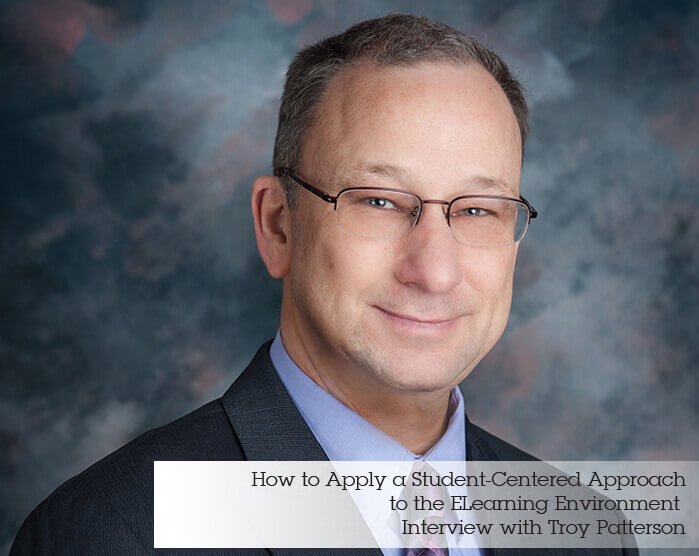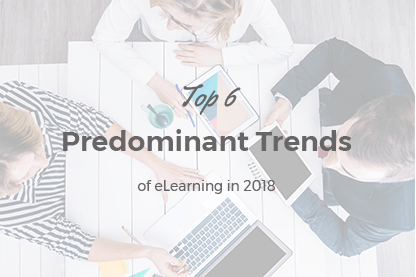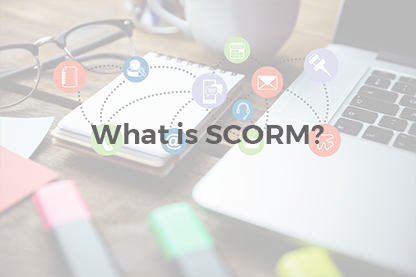Have you heard about a student-centered approach to learning? Chances of a positive answer are pretty high. Numerous researches show the effectiveness of learner-centered education with a focus shift from a teacher to a learner. To help you to apply a student-centered approach in the distant learning environment and highlight typical obstacles you can face trying to adopt student-centered projects across the curriculum we interviewed an educator, teacher, Director of Technology and consultant – Troy Patterson.
Have you heard about a student-centered approach to learning? Chances of a positive answer are pretty high. Numerous researches show the effectiveness of learner-centered education with a focus shift from a teacher to a learner. To help you to apply a student-centered approach in the distant learning environment and highlight typical obstacles you can face trying to adopt student-centered projects across the curriculum we interviewed an educator, teacher, Director of Technology and consultant – Troy Patterson.
Student centered learning truly puts the student at the very center of the learning process. Student centered learning combines at least two powerful concepts:
- Personalization
- Competency-based learning
The second aspect of student centered learning is competency-based learning. Competency-based learning is also referred to as standards based learning, mastery learning or proficiency based learning. A student centered classroom looks and feels different.
A traditional classroom will include the teacher lecturing, followed by a worksheet and some homework. Maybe there will be a discussion thrown in. Many teachers have moved far beyond that. Most classes now include cooperative learning activities, group work, Think-Pair-Share activities and more. These can be used in both traditional and student centered classrooms. If the activities are so structured that there is one product, one “right” answer and one “right” way of arriving at that answer, that is not a student centered classroom. Student centered isn’t really just about the activities.
Really, student centered learning is about a mindset. The mindset of a student centered classroom is that the all students can learn. Some will learn in different ways. Some will learn on different days.
A student centered classroom focuses on what the student learns. A teacher centered classroom is fundamentally centered on the teacher. The teacher “teaches”. Student centered is about a mindset. One of hallmarks of a student student classroom is in how the teacher talks about the classroom. If the teacher says things “I taught it, it is up to the students to learn” or “they (students) had the opportunity”, the classroom is a teacher led classroom.
Student centered classrooms have a differentiation built in. It is impossible to truly have a student centered classroom with it being differentiated. Part of the student centered classroom is personalization. We now the ability to make the feasible. It doesn’t mean that everything is personalized. Rather, that there is some level of personalization which meets the students needs. This also addresses the idea of relevance within the classroom. The research is pretty clear about relevance for students. Making learning relevant for learners increases their learning. A student centered classroom builds in relevance.
A truly student centered classroom brings much more efficient and effective learning for students. At the end of the day, schooling is about student learning. The student centered classroom allows students not to just pass, but to learn, in a deep and fundamentally appropriate way, the skills, processes and knowledge needed to be a successful learner.
The benefits are really wide ranging. First of all, students actually learn the material that they need to learn. Beyond that, students learn how they learn. Students end up taking charge of their learning. Students are engaged in the classroom and their learning. Teachers see the growth and development of the students. Teachers are more effective.
A student centered classroom proposes several hurdles. Being student centered starts with a mindset. Teachers need training. Teachers need to be able to collect and assess data. They need to have access to resources that varied and appropriate for their students. Teachers need time and support. Transitioning to a student centered classroom is not easy. Like all other projects, it is best to start small. It is also most beneficial to find a support group of like minded educators to join in the journey.
You are certainly correct that a student centered approach requires time and attention. However, student centered classrooms can be used with any size classroom. We now have a ton of technology resources that can assist with the development and implementation of student centered classrooms. The bigger issue is really the mindset of the teacher. Thus, it isn’t really the size of the class. Certainly, a smaller number of students makes a lot of things easier and more effective. It is far easier to really know fifteen students than thirty students. However, class size isn’t really the big issue. There are many ways to handle the workload. Naturally, there are some trade offs.
The role of technology is continually growing in education (and the rest of our lives). I believe that eLearning is a crucial portion of a student centered classroom. Although eLearning isn’t the only tool in a student centered classroom, it plays a huge role. Part of a student centered classroom is being able to provide different options and experiences for students. We currently have software that can really help with providing feedback to students as they are working through experiences. The teacher should be the one determining what those experiences are and how to best move forward. We are still in the infancy of building these experiences.
About the Author:

Troy Patterson is an educator, teacher, Director of Technology and consultant.
Currently, he is the Director of Technology at Dearborn Public Schools and consults on the ATEP program. In 2011, he was recognized as the Administrator of the Year by the Michigan Association of Middle School Educators.
Troy has presented on a wide variety of topics including uses of Moodle, Professional Learning, Student Centered Classrooms, and more.
To learn more about Troy, visit him on his web site: www.troypatterson.me
What to read next?
How to Motivate Students Online
How to Overcome Information Overload
The Secret of Building Professional Learning Communities










